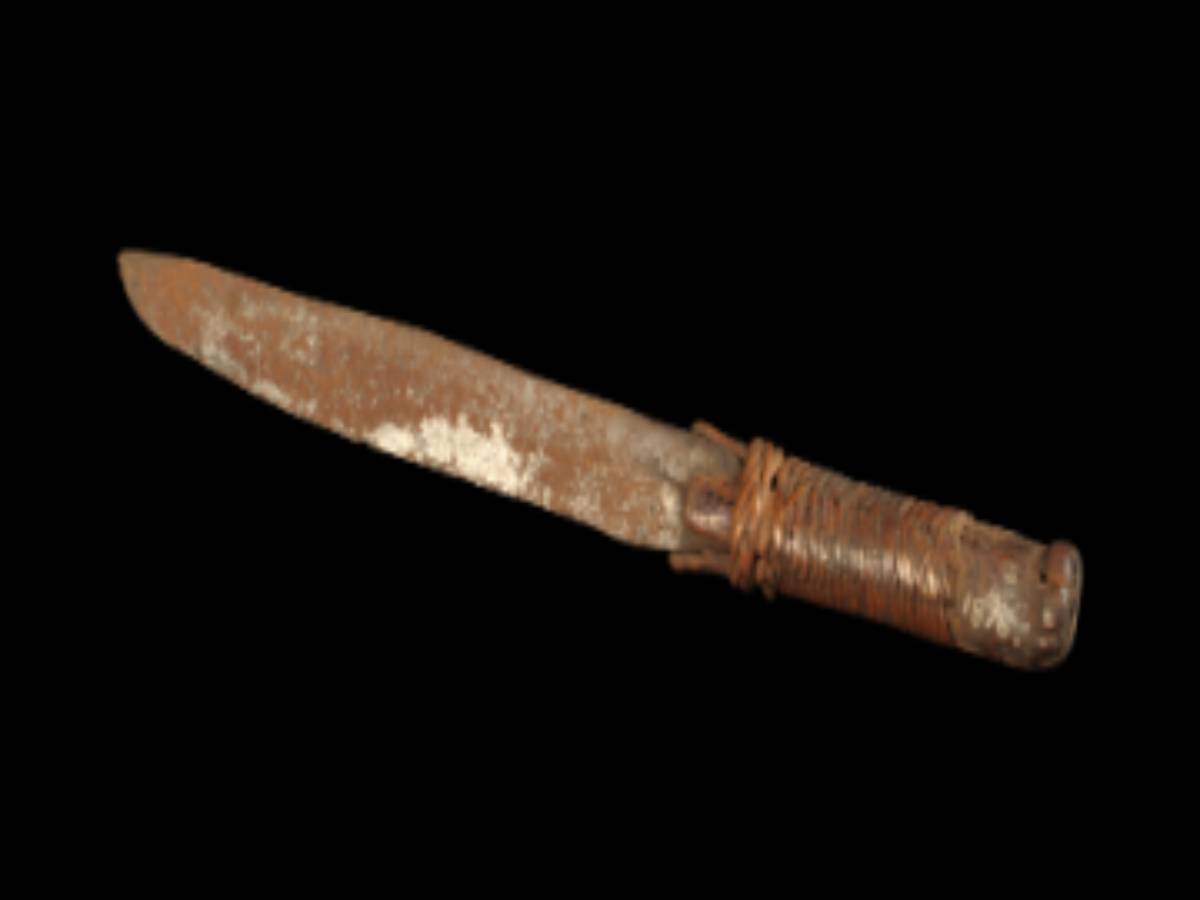State
Tribe Name
Art Type
short description
It is an iron knife that is a custom of a Khampti tribe. It lives in Arunachal Pradesh. The knife possesses firstly a sharp-edged iron blade elected in a pointed upper end which is good for using both cutting and piercing works. The end blade tangs into a small wooden handle and is made more beautiful by winding plaited cane strips all around the surface, both for ornamental reasons as well as to provide good grip.More plaited reinforcement of cane is done at the junction where the tang of the blade is inserted into the handle for stability and durability. This method shows the technical knowledge of Khampti people about naturals and especially uses beautiful and more substantial strength materials, mainly bamboo and cane, in making their tools.
Thumbnail

Filter Postion
Left
Filter Background
Off
Theme
Filter Header Image

content
Image

description
It is an iron knife that is a custom of a Khampti tribe. It lives in Arunachal Pradesh. The knife possesses firstly a sharp-edged iron blade elected in a pointed upper end which is good for using both cutting and piercing works. The end blade tangs into a small wooden handle and is made more beautiful by winding plaited cane strips all around the surface, both for ornamental reasons as well as to provide good grip.More plaited reinforcement of cane is done at the junction where the tang of the blade is inserted into the handle for stability and durability. This method shows the technical knowledge of Khampti people about naturals and especially uses beautiful and more substantial strength materials, mainly bamboo and cane, in making their tools.
Rich craftsmanship with Buddhism and martial heritage describes the Khampti. They are knives for things other than careful household purposes, such as chopping meat, cutting vegetables, or even bamboo. There are also knives as accessories in traditional clothing, carried during the festival, ritual, or in some cases just for identity among men.Usually, each of the knives is hand-forged by the individual blacksmiths and passed on to their generations, making them more important in culture as cultural artifacts even in modern times. The aesthetic use of natural materials in this manner also indicates an ingrained sustainable ethos in the tribe related to their forested environment.
Rich craftsmanship with Buddhism and martial heritage describes the Khampti. They are knives for things other than careful household purposes, such as chopping meat, cutting vegetables, or even bamboo. There are also knives as accessories in traditional clothing, carried during the festival, ritual, or in some cases just for identity among men.Usually, each of the knives is hand-forged by the individual blacksmiths and passed on to their generations, making them more important in culture as cultural artifacts even in modern times. The aesthetic use of natural materials in this manner also indicates an ingrained sustainable ethos in the tribe related to their forested environment.
Image Mode
landscape
promoted
On
Verified
Off
